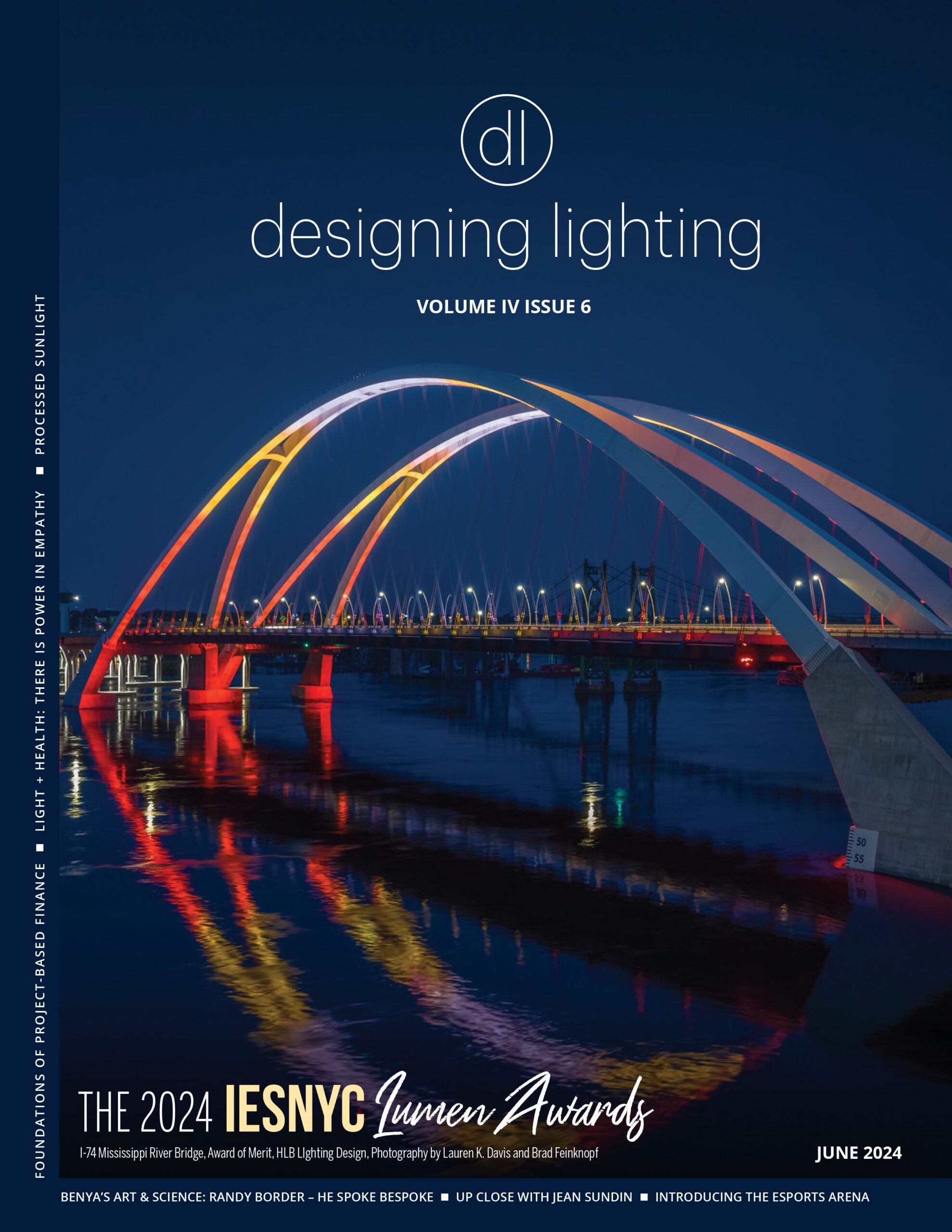A while back, I was part of DLC’s Stakeholder panel on “Lighting and the Smart Building,” an audience member asked about the value of connected lighting and what hurdles stand in the way of its implementation. While there is a lot of talk about the wireless lighting control technology advantages, I believe the biggest hurdle is that the industry looks at lighting in a silo. They look primarily at cost and energy savings within lighting, but not how lighting can be an enabler for other value propositions and how this can be measured.
Let’s first understand and differentiate the value proposition of wireless lighting. It is well-accepted that, in theory, wireless technology is cheaper than traditional wired lighting and offers greater flexibility with more features. At the same time, wireless lighting involves some complexities that require attention. For example, some of the work involved shifts from the traditional electrician work scope to an IT integrator. Less wiring and running cables are required, saving the owner money while reducing the contractor’s work scope. Furthermore, less equipment needs to be shipped, resulting in streamlining supply chain management, eliminating middlemen and minimizing disruption to distributors, reps and contractors. The question, however, that remains is how it creates value that can be quantified?
The day after the DLC panel, a market research agency interviewed me on the topic of smart lighting. As the reporter went through his list of questions, I realized that he was completely missing the point. He focused on energy savings and the ROI of a lighting system while not addressing that a smart lighting system can and should be an enabler, unlocking value in areas and industries other than lighting. Connected lighting is the interconnectivity between different systems to generate actionable data and providing the ability to automate and develop new processes beyond lighting. Lighting is just one ‘bucket’ in the connected smart building. The value is realized when the different buckets join, talk to each other and unlock new value propositions.

Image Courtesy of CABA
For example, let’s look at some typical operating costs in an owneroccupied commercial space. Energy maintenance, mortgage and rent account for only about 10% of the building’s operating cost, while the other 90% comes from the people inside the building – salaries and benefits. A >0.5% reduction in utility pales in comparison to savings achievable in other areas of operations. It stands to reason that management would focus on ROI strategies related to the building occupants rather than building operating costs and energy efficiency to drive cost savings.
Several years ago, I saw how the owner of a hip lifestyle hotel did not appreciate the synergies a wireless lighting control system could bring to his overall branding and user experience while reducing operating expenses. We proposed a wireless lighting control system with multiple features and human-centric benefits that provided a nine-month ROI. For their corridors, we proposed conversion from costly energy-draining halogen fixtures to color-changing LEDs. The proposal featured automated lighting scenes that mimicked the current time of day and adjusted for jet-lagged guests who needed to shift their circadian rhythms. The concept was to bring a sunlight feeling inside during the daytime and save energy by using dimming and warm amber-white light during the nighttime. At the same time, it also offered the ability to customize lighting for particular events, such as the changing seasons. The hotel would have been given the ability to personalize the look and feel of the space, bringing mood, color and ambiance to otherwise monotonous corridors. While the ROI of the project based on energy savings was only nine months, the project never progressed from a pilot into full implementation. The hotel manager revealed that this project was too small for the owner to focus on, as there were other pressing issues with more significant budget impacts that needed his attention. It unfortunately kept falling through the cracks.
What does this mean for the industry when rebates for energy savings and LED conversion are increasingly becoming smaller and will ultimately fade out? How can energy savings move the needle when they make up less than approximately 1-0.5% of the building operating cost? As another experienced hotel owner pointed out, why waste time going after 0.5% operating expense savings with lights when he could make a 10% budget difference by focusing his time dealing with labor unions.
What is the value proposition for lighting, and how can it transition from a mere commodity into a game-changing asset? How can we change the perception that lighting innovation equates only to lower electricity bills? How can we capture actual value through smart lighting? To achieve that, we have to change the conversation to include a broader smart building context. Let’s look at just a few of the use cases that smart lighting will enable, such as space optimization, indoor navigation, human wellbeing, and asset tracking.
In the example of “space optimization,” a sensor embedded in a ceiling lighting grid can collect the data to analyze which areas are occupied at any given time and highlight under- or over-utilized areas in a given space. This means that a business owner can use this data to reconfigure the floor plan and optimize the layout. This could potentially achieve substantial savings through more efficient use of space, or reduced rental space when realizing the space is not fully utilized. While this can result in savings for any business, industries across the board are yet to appreciate it. This application can create substantial value and monetary savings for an owner/occupier by renting less space for example. However, this is at odds with the lighting industry’s traditional interest, which focuses on selling more fixtures at higher margins. While the sensor-integrated lighting fixtures enable value creation for other areas, the suppliers are not increasing their profit margins by selling their fixtures. The light fixture is still only a hardware commodity that is not leveraging the unlocked owner’s benefits. Suppose they hang onto their existing business model. In that case, they have no incentive to drive smart technology innovation and applications forward as it will not result in more fixture sales and additional profit for them.

Quin Hotel Corridor Image courtesy of Lumify
“Asset tracking” is an important service in the retail sector where product placement drives sales. The data allows retail managers to track customer flow, the attractiveness of displays, and the resulting revenue. Similarly, the technology can be leveraged in hospitals where seconds spent accessing equipment and medicine can make the difference between life and death for a patient. Asset tracking enhances time savings and work efficiencies. Here again, lighting is an enabler to capture data and then translate that data into actionable information.
Of course, in the last two examples, you can make the argument that the sensors can be installed independently from a lighting fixture. The more significant cost savings and synergies are realized when the technology is an integrated unit that works in tandem with being wireless and is already combined in the same physical unit and power supply. Higher costs and integration are required when the different systems are layered on top of each other.
Let us look at the value proposition of lighting that supports wellness and enhances employee happiness, which logically translates to a higher degree of productivity and performance. At some point soon we hope to have studies that illustrate and quantify the effect of better lighting on increased employee performance, reduced recovery times for hospital patients, minimized jetlag for travelers in hotels, and fewer people suffering from depression in their homes. Again, here the unlocked dollar value arises from the benefit to the end-users. In an office environment, the employer profits from more productive and focused employees; in a hospital, the health insurance benefits from shorter hospital stays; while in a hotel, the franchisee gains recognized brand identity and guest satisfaction. The lighting manufacturing industry typically captures value in units sold. The lighting manufacturer only captures revenue by selling a more expensive fixture with maybe a higher margin. With fixtures getting cheaper and more overseas competition breaking into the market, the margins will go down. This begs the question, what is the future of our lighting industry? Can the business model be changed if our industry can connect having a higher quality of light to unlocking something else? Can we profit through the incremental value created or enabled instead of just through sale of a hardware product?
This also begs the question of who will ultimately be the driver and decisionmaker for the smart lighting industry? If the lighting industry can only see a declining bottom line as increasingly less expensive fixtures are sold, and less wiring is needed to install a wireless lighting control system, where is their upside? How can they still make money? Why should the existing lighting industry want to embrace the better technology that cuts into their bottom-line?
Currently, the burden of asking for and specifying a smart lighting system falls to the building owner, who barely has the bandwidth to look at ever-diminishing lighting energy ROI. Traditionally, the lighting designer would specify these smart lighting systems, but as the added value proposition falls outside their scope and experience, designers often feel they have insufficient arguments and no stake or ownership. Typically, the lighting control system is specified by the engineer, who often uses their existing relationships with the traditional supply chain and systems. Smart lighting systems require a lot of education and a steep learning curve, so why should the engineer and designer bother if the owner does not specifically request it?
In the current state of affairs, we observe that while the adoption of smart lighting systems is stalling in the U.S., in Europe it is evolving and thriving. One of the reasons is that there is clearer price transparency with fewer middlemen between the owner and the manufacturer. Owners can conduct purchases directly, which makes for a faster and easier buying decision. In the US, most lighting sales are controlled by the manufacturer’s representative, and the electrical distributor channel. It helps to understand that these groups are not incentivized to sell a system that costs less, translating to reduced profit margins.
Hypothetical, what would happen if at some point we have the data to argue that certain “quality-performance-certified” fixtures could unlock a very modest 1% increase in workers’ satisfaction and productivity and therefore, there could be a compelling ROI calculation for the business owner? This could mean that the fixture price can be adjusted to its ‘perceived value’ and does not have to follow discount pricing, which translates into a tangible value capture for the lighting industry. The new fixture price would be equivalent to the cost savings of 1% of the worker’s performance which is a multiple of the current fixture cost.
The lighting industry needs to look outside the traditional ROI argument to find its new meaning and unlock additional value propositions. The value sits not within the existing channel and supply chain but in its value as an enabler of other information, services, and technology. Once we start to understand this, the lighting industry can move from a race to the bottom-line to becoming a game-changer that will participate in new value creation.
This article was originally featured in the April issue of designing lighting (dl)



